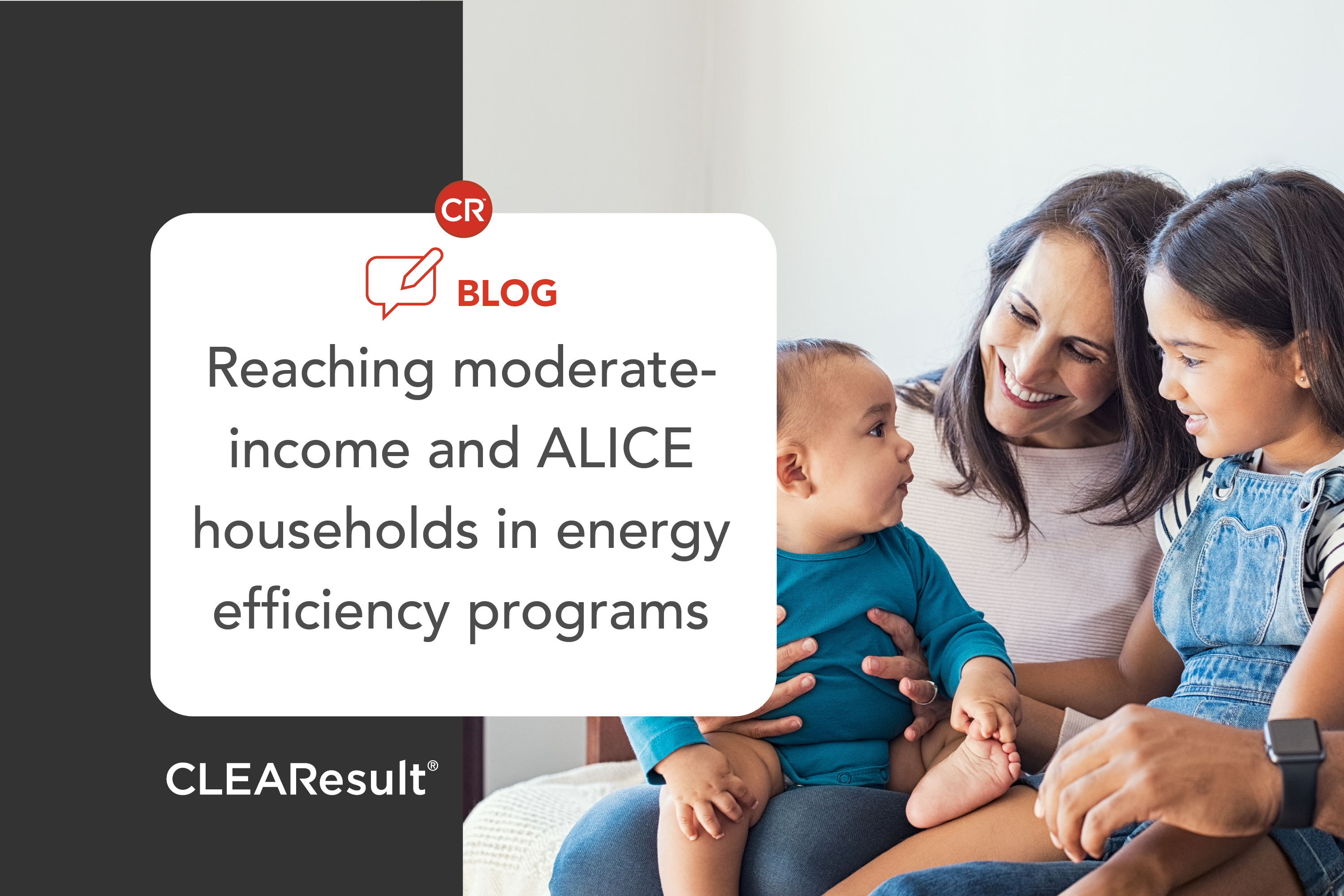Reaching moderate-income and ALICE households in energy efficiency programs

There are millions of utility customers across the country who struggle to make ends meet, yet may not qualify for utility-led energy efficiency programs and federal initiatives like the Weatherization Assistance Program (WAP) and the Inflation Reduction Act (IRA).
These programs typically prioritize support for low-to-moderate income (LMI) households – and these households do often have higher energy burdens and need additional financial help or incentives to move ahead with energy-saving projects. But having a firm cutoff for increased incentives where customers are either “low income” or “market rate” means many families earn too much for enhanced assistance yet still struggle to afford essential energy upgrades.
Without targeted programs, these moderate-income households miss out on valuable energy efficiency improvements. And with moderate-income customers making up nearly one-third of the population, this could be a missed opportunity for utility programs to engage a critical segment of their customer base and drive additional savings.
To better understand how utilities can serve moderate-income households, we spoke with Rebeca Barrios-Hurst, who leads our LMI portfolio.
What are the challenges in designing programs for moderate-income customers?
One of the biggest hurdles is defining who qualifies. It’s not always clear where “low income” ends and “moderate income” begins. In energy efficiency programs, funding is often limited to those who meet strict income thresholds (often determined based on the federal poverty level). This leaves out those who earn just above the cut-off but still need financial help – especially for large upgrades or replacements.
How can utilities better define “moderate income”?
To better serve moderate-income customers, utilities can use the ALICE framework – Asset Limited, Income Constrained, Employed – developed by the United Way. ALICE households earn above the poverty line but still struggle to afford necessities like housing, childcare, transportation and healthcare. As of 2024, ALICE households made up about 29% of the U.S. population (nearly 40 million families). When combined with the 13% living below the poverty line, that’s 42% of Americans (around 54 million people) living below the ALICE threshold.
While low income is often defined as up to 200% of the Federal Poverty Level (FPL) or 80% of Area Median Income (AMI), ALICE households often fall just above that – up to 250% of FPL or 120% of AMI. That could potentially mean thousands of households in a utility territory are facing similar energy needs as traditional LMI customers but aren’t eligible for energy efficiency measures, especially ones that help promote comfort, health and safety.
What types of offerings or incentives work for this group?
To make energy efficiency upgrades more accessible for the ALICE population, utilities can provide partial incentives paired with affordable financing. For example:
- Low-income customers receive incentives covering 100% of project costs.
- Moderate-income or ALICE households receive incentives to cover up to 80% of the project costs, supplemented by financing opportunities or braided funding from state, federal or partner programs.
This blended approach is a win for utilities because it helps overcome upfront cost barriers, increasing participation and delivering greater savings while improving program equity.
What steps can utilities take to engage moderate-income customers?
- Evaluate the size of the ALICE population in your territory: Use resources like United Way’s reports and tools to identify the size and needs of the ALICE population within your service area.
- Identify eligibility gaps: Compare your current LMI program criteria against ALICE demographics to uncover any gaps and develop a plan to expand or shift your program offerings.
- Pilot targeted programs: Develop pilots focusing on the ALICE population to refine outreach, incentives and financing options to inform long-term programmatic changes.
- Collaborate with community-based organizations: Partner with local groups serving moderate-income and ALICE populations to expand reach and tailor program delivery.
- Leverage multiple funding sources: Combine incentives from federal, state or municipal programs and supplement with support from healthcare, financial institutions or other stakeholders to bridge financing gaps.
What is the benefit to expanding these opportunities for moderate-income and ALICE households?
By broadening program eligibility and tailoring incentives, utilities can better serve moderate-income and ALICE households – powering new energy savings and promoting equitable access to energy efficiency upgrades. Collaboration across a wide range of programs and partners paired with data-driven planning is critical to making a lasting impact.
Rebeca Reyes Barrios-Hurst is a Senior Practice Consultant for CLEAResult. She has spent more than two decades working with nonprofits to service low-income families and the ALICE population. Rebeca has experience in program implementation, evaluation and budgetary best practices. Her work at CLEAResult focuses on equity for income-qualified customers in resident energy efficiency and sustainability.
Rebeca holds a B.S. in International Business, an MBA in International Marketing and Finance and is a doctoral candidate of Educational Leadership at Central Michigan University. Her passion for blending research, nonprofit management, energy efficiency through emerging technologies and sustainability through education leads to her exploring new concepts that use design thinking for innovation and solutions.